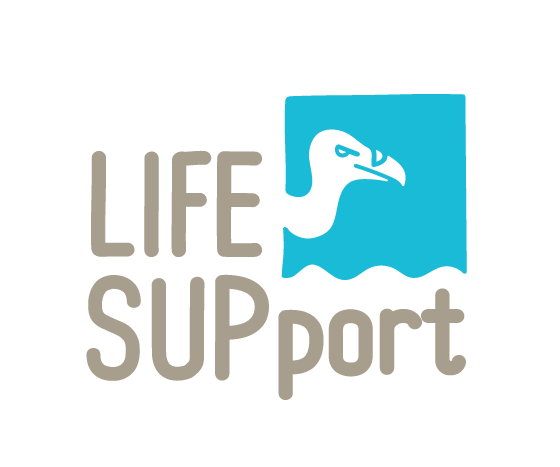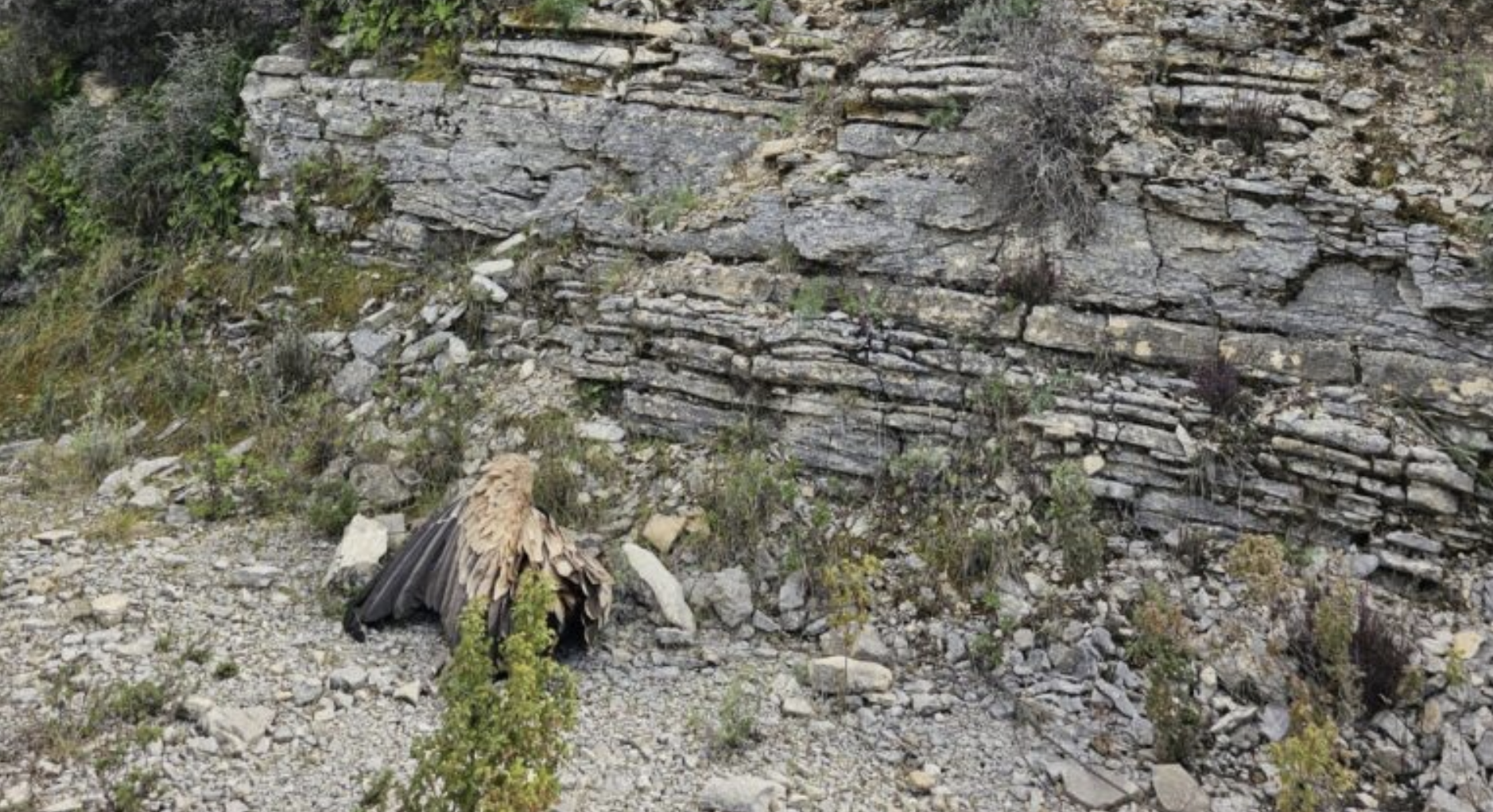The young Griffon Vulture Grif, hatched in the Kvarner island of Plavnik this spring, keeps its fan on their toes. Grif has been under the public eye since its egg was laid: its nest was monitored through cameras, and it was named in a public action online. Its misadventures started in July, when it needed rescue after ending its first flight attempt in the sea. Recently, the young bird was rescued again, after being stuck on a tree during its exploration of Albania. Once more, technology and international cooperation saved its life.
Grif, the Kvarner Islands mascot
Last April the Griffon Vultures (Gyps fulvus) colony of Plavnik (Kvarner Islands) welcomed a new member. The young Griffon Vulture hatched from a well-known pair. The LIFE SUPport team followed its entire development thanks to the camera of the Public Institution Priroda placed next to the nest, and the efforts of volunteers Iva Macan and Veronika Bencerić. The young vulture was named “Grif” in a public action with the participation of many nature lovers.
Griffon Vultures are the only vulture species in Croatia and their number declined due to habitat loss, poisoning, and food scarcity. Their population today counts only 110-130 pairs. The LIFE SUPport project aims to tackle these threats, protect the nesting colonies and support future recolonization of the mainland. In the Kvarner Islands, Griffon Vultures nest on sea cliffs, which is a rare phenomenon for the species and makes even harder for young vultures to try their first flight. In fact, they often end up in the sea. Likely for them the local teams are usually able to rescue them before they drown.
Unfortunately, Grif was one of those young vultures that need rescue. Mid-July, it left the nest for the first time and ended up in the sea. Luckily, it was promptly rescued by the staff of the the “Beli” Visitor and recovery centre for Griffon Vultures on the island of Cres. After a month under the care of the recovery centre, it was released back into nature.
Grif’s latest adventures
Once recovered and released, Grif started exploring. It visited the Alps first and then headed south, to Albania, following the warm air currents.
It flew east of Laç and Tirana, rested near the Tomorri National Park and headed south-west of Dimal. Finally, its GPS transmitter signalled it was resting in the agricultural areas in the western part of Orizaj. The time passed but its satellite transmitter signal was still in the same spot. It is always a reason of concern if a vulture stays in the same place for long time, without moving at all.
Worried about its conditions, the LIFE SUPport team immediately alerted the Albanian Ornithological Society ( AOS ). Their volunteers searched for Grif and found it stuck on a hazel tree! They managed to help it out of the tree, but the young vulture was not fit to fly so soon: it was very weak and underweight.
As a social species, Griffon Vultures rely on one another to find food and shelter. Grif probably has not mastered yet the ability to find food on its own. Fortunately, it is constantly monitored by the LIFE SUPport team and its partners across Europe.
Grif is now in excellent hands. The Divjaka-Karavasta National Park recovery centre is taking care of it until it gains weight and then they will release it back into the wild.
Monitoring and international cooperation make the difference in conservation
Grif misadventures highlighted once again two crucial sides of vulture conservation: monitoring and international cooperation.
It is only thanks to cameras and satellite transmitter that the LIFE SUPport team and its partners were able to follow and rescue Grif, as they have done with many other vultures. Moreover, monitoring is crucial for conservation projects because it allows scientists to collect data bout birds habits, routes and eventual threats to their safety.
At the same time, the international network built over time in vulture conservation, makes it easier for teams to be in contact with one another in case of emergency and it also increases the amount of data that used to study the species. This time even the oldest Albanian environmental protection organization PPNEA (Protection and Preservation of Natural Environment in Albania ) came to the rescue. Grif surely hatched under a lucky star!
We hope Grif will quickly recover and learn to master its survival skills in the wild, even without the help of other vultures. It usually takes up to five years for young Griffon Vultures to learn how to find food and shelter on their own. Luckily for Grif, the LIFE SUPport team and their partner will continue to monitor it via satellite transmitter.
LIFE SUPport
The LIFE SUPport aims to strengthen Croatia’s endangered Griffon Vulture (Gyps fulvus) population. A 5-year project co-financed by the EU’s will create better conditions for the species to thrive and recolonise its historical breeding ground on the Croatian mainland. The project aims to improve breeding and survival conditions, minimise nest disturbance, reduce nestling mortality, tackle the threat of poison, mitigate collision and electrocution risks, and increase food availability.

The LIFE SUPport is a 2.1 million project from January 2023 until December 2027. A joint effort led by BIOM with Public Institution Priroda, Otok Krk Agricultural Cooperative, HEP – Operator distribucijskog sustava d.o.o., the energy distribution company, the Vulture Conservation Foundation and the Croatian Nature Protection Directorate (Ministry of Economy) as associate partners.




